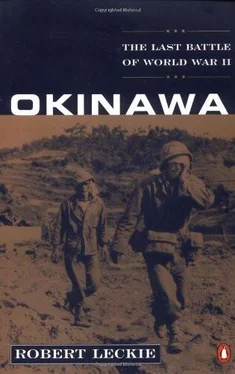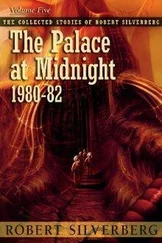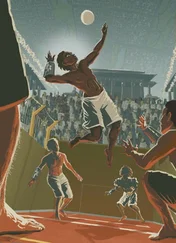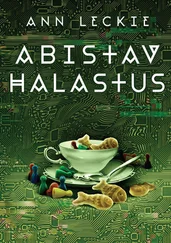Klingman started down, losing his oxygen at 18,000 feet, and his power at 10,000. But he landed at Kadena Field, dead-stick and on his belly, his wings and fuselage sewn with bullet holes and pieces of the destroyed Nick in his cowling.
Nevertheless, the losses inflicted on the enemy aircraft did not dissuade Admiral Turner from asking Buckner once again to speed up his attack, and the Tenth Army chief obliged by scheduling a massive, four-division assault for May 11.
The Tenth Army had four full divisions abreast. General Hodge’s Twenty-fourth Corps was on the left (or east) with the Ninety-sixth and Seventy-seventh divisions in that order, and General Geiger’s Third Corps on the right (or west) with the First and Sixth. The Ninety-sixth’s objective was Conical Hill, the Seventy-seventh would buck at Shuri Castle, the First strike the Dakeshi-Wana-Wana complex guarding Shuri, and the Sixth at Sugar Loaf Hill. Of these four objectives, those facing the Marine divisions were the strongest.
Sugar Loaf opposite the Sixth was at least the formidable equal of the bloody meat grinder of Iwo Jima. It was not just one hill but a complex of three. Sugar Loaf itself did not look difficult, just an oblong ridge about fifty feet high. But it was protected to its left rear by the Half-Moon and on its right rear by the Horseshoe, a long ridge bristling with mortars. On the left where the First Division was attacking was Shuri Heights, also stuffed with gunners who could hit the Sixth on Sugar Loaf as well as the First to their front.
To attempt to get at Sugar Loaf was to be hit by the others. To strike at the others was to be hit by Sugar Loaf. But this was not suspected until the main position was reached on the morning of May 14, after a fighting crossing of the Asa River and steady grinding down of smaller hills guarding the approaches.
On that May 14 most of the morning was spent evacuating Marines stricken while crossing the flat open ground approaching that harmless-looking loaf of earth. In the afternoon a charge with supporting tanks was driven back when three of four tanks were knocked out, and artillery from Sugar’s front, left-rear, and rear fell among the riflemen. A second assault before dusk reached Sugar Loaf’s base. But of 150 Marines from the Second Battalion, Twenty-second, who began it, only 40 reached the hill. They were exhausted. They were out of supplies. It was getting dusk. Suddenly, the enemy stopped firing. The men realized that someone was speaking to them. It was Major Henry Courtney, the battalion’s executive officer.
“If we don’t take the top of this hill tonight,” he was saying, “the Japs will be down here to drive us away in the morning. The only way we can take it is to make a Banzai charge of our own. I’m asking for volunteers.”
There was hardly a pause before the Glory Kid stepped forward, grinning.
“I hate to sound like a guy in a dime novel,” said Corporal Rusty Golar, “but what the hell did we come here for?”
There were 19 other volunteers from this exhausted remnant, and 26 fresh men who appeared carrying supplies. Major Courtney took these 45 Marines up Sugar Loaf under cover of darkness, heaving grenades as they went, digging in under the protection of their own mortars. From the Horseshoe and Half-Moon came machine-gun fire and mortar shells, while grenades came up at them from the reverse slope of Sugar Loaf. At midnight, Courtney heard the enemy gathering below. He decided to strike them.
“Take all the grenades you can carry,” he whispered. “When we get over the top, throw them and start digging in.”
They went out, behind Courtney. They heard the major, shout, “Keep coming, there’s a mess of them down there!” And then they heard the explosion of the mortar shell that killed him. They answered with grenades of their own, hanging on to Sugar Loaf while all of the Japanese positions struck at them, while a cold rain swept in from the East China Sea, until the mists of the morning showed that there were only 20 men left of the 45 who had come up the night before.
In that mist Rusty Golar, the self-styled Storybook Marine, fought the battle he had always sought. With his buddies he was on the right flank of Sugar Loaf, where he set up his light machine gun. With daylight, the Japanese on Horseshoe Hill to his right opened up on him. Golar fired back. The Japanese on Half-Moon to the left opened up. With a deep, booming “Yeah!” Golar swiveled his gun to rake Half-Moon.
Back and forth it went, the whipsawing Japanese fire, the booming “Yeah!” of the Glory Kid and his own alternating bursts. It went on while Sugar Loaf’s defenders were gradually whittled to a handful, while men trying to bring up ammunition were killed or wounded, continuing until only Golar and a few others were left alive. By then the Glory Kid’s machine-gun belts had all been fired. He drew his pistol, yelling, “Gotta use what I got left!” He emptied it twice more. He threw it at the caves below and began scurrying about the hillcrest to gather grenades from the bodies of dead Marines.
“Still need some more stuff to throw at those guys,” he yelled at Private Don Kelly, one of the few men still alive on the ridge. He threw. He found a loaded BAR in the hands of another fallen Marine, seized it, jumped erect, and fired it until it jammed.
“Nothin’ more to give ’em now,” the Glory Kid bellowed to Kelly. “Let’s get some of these wounded guys down.” He bent over to pick up a stricken Marine as easily as hefting his machine gun. “I’ll have you in sick bay in no time,” he said in a soothing voice, and began walking toward the rear edge of Sugar Loaf. An enemy rifle cracked. Rusty Golar was staggered. He put the wounded man down carefully. Incredulity was etched on his rough, slowly whitening features. He walked to a ditch and sat down in it, pushing back his helmet like a man preparing to take a snooze—and there he died. No posthumous Medal of Honor commemorates the deeds of this valiant warrior, not even another Bronze Star. He had been brave and compassionate, the twin virtues of a born fighter, and though both went unrecognized, Rusty Golar remains a legend in the annals of his gallant corps.
Soon his comrades on Sugar Loaf were recoiling under a thundering shower of enemy mortar shells. Three Sherman tanks that were to have punished the enemy’s reverse slope and thus clear the way for the foot soldiers were knocked out by enemy 47 mm antitank guns, their blazing hulks incinerating the silly superstition of the “near-sighted Japanese.” Without this support the Marines could not hold against renewed Japanese assaults. They withdrew, leaving behind them the still bodies of about a hundred comrades, among them the burly football star George Murphy, and the forty-five selfless volunteers of the valorous Major Courtney, whose widow would receive his posthumous Medal of Honor.
Throughout that night and the following day the Japanese clung stubbornly to Sugar Loaf while the entire complex quivered beneath a combined air-sea-land artillery barrage preceding each American assault. But all were repulsed, until, on May 17, an end run turned the Sugar’s left flank.
An almost imperceptible depression had been observed running north and south between Half-Moon Hill to the left and Sugar Loaf. It was not actually a valley, but Japanese fire on Marines who had wandered into it had not been heavy or accurate. General Shepherd, up on the lines now, decided to move an entire regiment—the Twenty-ninth—through this tiny chink in Sugar Loaf’s armor. Two battalions would go through to strike at Half-Moon Hill, holding there to support another battalion moving against the left face of Sugar Loaf, which their own assault was expected to unmask.
The battalions went forward under a fierce barrage. Half-Moon Hill was hit. Sugar Loaf was attacked. Three times a company of Marines charged to Sugar Loaf’s crest. Each time they were driven off. They surged up a fourth time and won. But they had no more ammunition. None could be brought up to them. It was heartbreaking. They had to go down, giving up the vital height taken at a cost of 160 casualties.
Читать дальше










